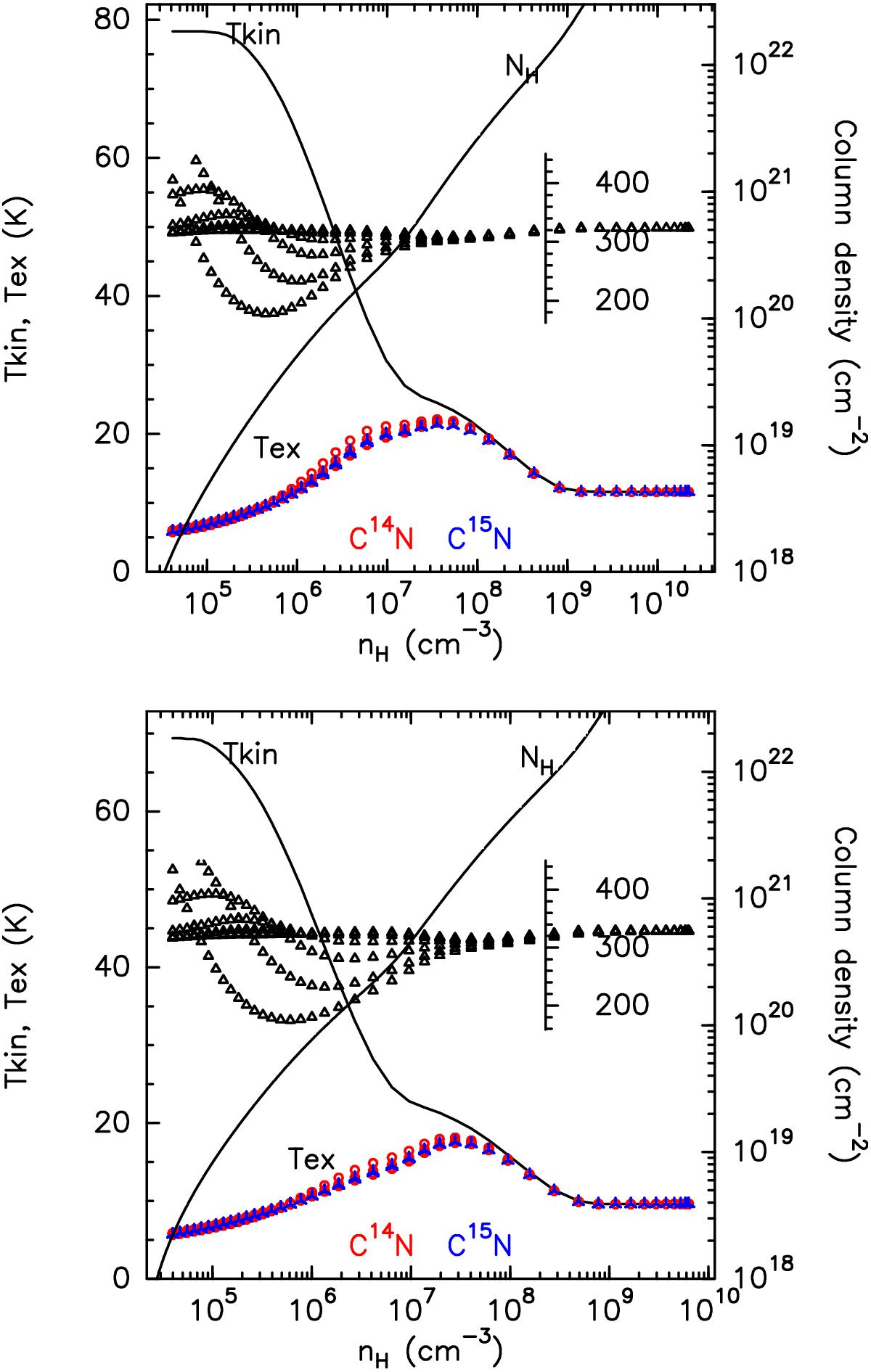Fig. C.6

Physical structure and excitation temperatures of CN(ν = 340.265 GHz) and C15N, within the CN-ring, at radii of R = 60 (top) and 85 AU (bottom). The total proton number density and kinetic temperature profiles are taken from (Qi et al. 2013). The corresponding cumulative column density, increasing towards the midplane, is also shown (right scale). The excitation temperatures Tex of the CN and C15N hyperfine components (star triangles and open circles, resp.) considered in our uv-plane analysis (see Sects. A.2 and A.3) were obtained in the escape probability formalism using the RADEX code (van der Tak et al. 2007), and adopting a FWHM of 0.25 km s-1. For each density and temperature, a range of CN total column densities were adopted, from 1012 to 1015 cm-2, with C15N being 300 times less abundant. Also shown is the CN/C15N isotopic ratio (open triangles, inset scale) obtained by use of Eq. (C.1) when adopting the CN and C15N excitation temperatures from the non-LTE calculations.
Current usage metrics show cumulative count of Article Views (full-text article views including HTML views, PDF and ePub downloads, according to the available data) and Abstracts Views on Vision4Press platform.
Data correspond to usage on the plateform after 2015. The current usage metrics is available 48-96 hours after online publication and is updated daily on week days.
Initial download of the metrics may take a while.




